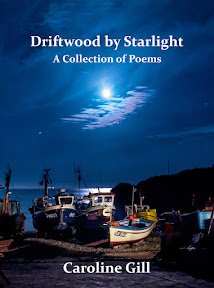 Wordsworth was influenced artistically
Wordsworth was influenced artisticallyby his patron, Sir George Beaumont,
who played a key role in the founding of the National Gallery in London
and lived at Coleorton Hall
From my undergraduate studies of Classical Greek, I know that ek corresponds to out, and phrasis to speak. We find ek or ec in English words like ectoplasm. We also find it transmuted to ex in words like external. We know phrasis, of course, from words like phrase and phraseology. Ekphrasis, a rhetorical technique, is therefore a combination of these word-parts, which when combined give a meaning of speaking out or proclamation - or to put it another way, of calling 'an inanimate object by name' [Wikipedia - see also a number of definitions garnered by Ryan Welsh at the University of Chicago].
The majority of ekphrastic poems (I believe) shed light on a picture without the two art forms being physically conjoined. They do, however, build an imaginary bridge between the 'verbal' and the 'visual'. Take, for instance, the iconic example of Keats' Ode on a Grecian Urn. What is important here is that the poet brings a 'notional' or 'allusive' - rather than an 'actual' - image before our inner eye and makes us question what we visualise. There is no need for us to see the urn (which may or may not be a single artefact) portrayed in a given medium alongside the poem. The words alone do the work, conjuring up the object in our imagination.
We occasionally encounter ekphrasis in poetry as an actual and symbiotic pairing of word and image. That is to say, for example, that a poem text and piece of corresponding 'visual art' work in tandem to form a fusion or new creation. The one art form elucidates and illuminates the other in some manner - and this is a two-way process. We can all recall our childhood story and poetry books in which the bold and colourful illustrations added so much to each tale or poem. I consider this powerful marriage to be ekphrasis at its most basic (and on occasions at its most potent) level.
In these multi-media days of collaborative enterprises and opportunities, we are familiar with countless instances of art forms impacting on other media. Ekphrastic poetry could be 'illuminated' or 'enhanced' (I hesitate to say 'illustrated') by 'actual' painted work, pen-and-ink drawings or photographs. It may be of interest to note that a union of photography and poetry has appeared in the Poetry Book Society bulletin as Photoetry, but I see this as a form of ekphrasis rather than as something different again.
The questions lingering in my mind are ones of definition and distinction:
- Are all 'visual' poems ekphrastic?
- Are all 'illustrated' stories (like those in the children's picture books mentioned above) ekphrastic?
* * *
Previous Coastcard posts touching on Ekphrasis can be found here and here. My Photoetry entry (with a couple of book recommendations) is here.
You may also like the following:
- Ten of the best: examples of ekphrasis by John Mullan, The Guardian, Sat. 14 November 2009
- Tim Liardet on Ekphrasis and Ekphrasis, New Welsh Review, Number 72, Summer 2006 (in which the author makes reference to the classic example of the Shield of Achilles in Homer's Iliad). This is a compelling, lively and contemporary survey - and comes highly recommended!
- Wikipedia article, with extensive bibliography
- Ekphrasis - a Poetry Journal
- Digital Ekphrasis - Cecilia Lindhé
- Wordsworth, ekphrasis - and the (artistic) patronage of Sir George Beaumont (see here for Grace Dieu and Coleorton)








3 comments:
both of your pictures are beautiful but that first one is my favorite.
Lovely to see Grace Dieu featured - it's only a mile or so down the road from me here.
I think Wordsworth regularly stayed at Coleorton Hall (which later became a Coal Board regional office), as did Sir Walter Scott. That's why the latter set part of Ivanhoe in Ashby de la Zouch nearby.
Nice article and photos Caroline. And thanks for explaining it to me when I attempted some Romantic paintings.
Post a Comment